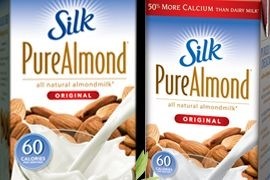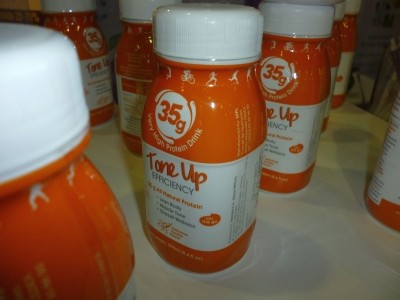Can the almond-based dairy alternatives market maintain its 50% growth level?

According to a recent report by IBIS World, the soy and almond milk industry is set for significant growth over the next five years, “as demand for alternative dairy beverages continues to strengthen”.
Estimates peg the number of Americans thought to be lactose intolerant between 35 and 50 million. Large portions of the African American and Native American populations cannot tolerate lactose, but the highest prevalence is in the Asian American population, in which as many as nine in ten are lactose intolerant.
The market is already worth about $350 million, said Suzanne Hagener, senior marketing manager for the Almond Breeze range of products from Blue Diamond Growers, and it’s growing at about 50%.
The IBIS World report noted that, while the industry faces few barriers to entry, and that the raw materials for all the dairy alternatives are readily available, be it soybeans, almonds, rice and coconuts, “competition is the main barrier to companies wishing to enter this industry.
“The current major companies have a breadth of locations in which they operate and a range of products.
“Strong brand names, such as Silk and Almond Dream, can be a significant barrier for new entrants to penetrate the market,” it added.
So why the growth in almond-based dairy alternatives? Hagener says it is because consumers are realizing that these products are “a great alternative to both dairy milk and other non-dairy products”, with versatility high on its list of attributes.
“In addition to its great taste and healthy/nutritious benefits, it is also a great product to use for smoothies, in cereal, in coffee or in favorite recipes.”
Lactose-free
The lactose-free market is not all about alternatives like soy, almond and rice milk, however. Numerous companies have produced low-lactose or lactose-free versions of dairy products.
A recent report from Global Industry Analysts (GIA) stated: “The huge rise in demand for lactose-free products has led several companies to focus on formulation of dairy-free products, through modification of the processing techniques and dosages.”
The dairy-free and lactose-free segment is pegged as the largest ‘free-from’ sector across the Western European and US markets, worth US$3.6bn in 2010, according to a report from Leatherhead Food Research. Almost 3,000 new products with ‘suitable for’ or ‘free from’ claims were launched in 2010 across the US and Western Europe markets, representing 10% of all NPDs that year.
European USP
Looking at lactose-free dairy only, Euromonitor International comes up with a figure for global sales of $2.69bn in 2011.
The market analyst even predicts that lactose-free products may offer processors a competitive edge in the increasingly stagnated European dairy market, even though lactose-intolerance among European consumers is fairly low.
Self-diagnosis is growing the market size, however, with Europe accounting for around $1.19bn of the $2.69bn spent worldwide on lactose-free products in 2011.
Consumers have numerous options available for them, but, according to Hagener, at the end of the day, “consumers are looking for food products that both taste great and are also healthy.”

















